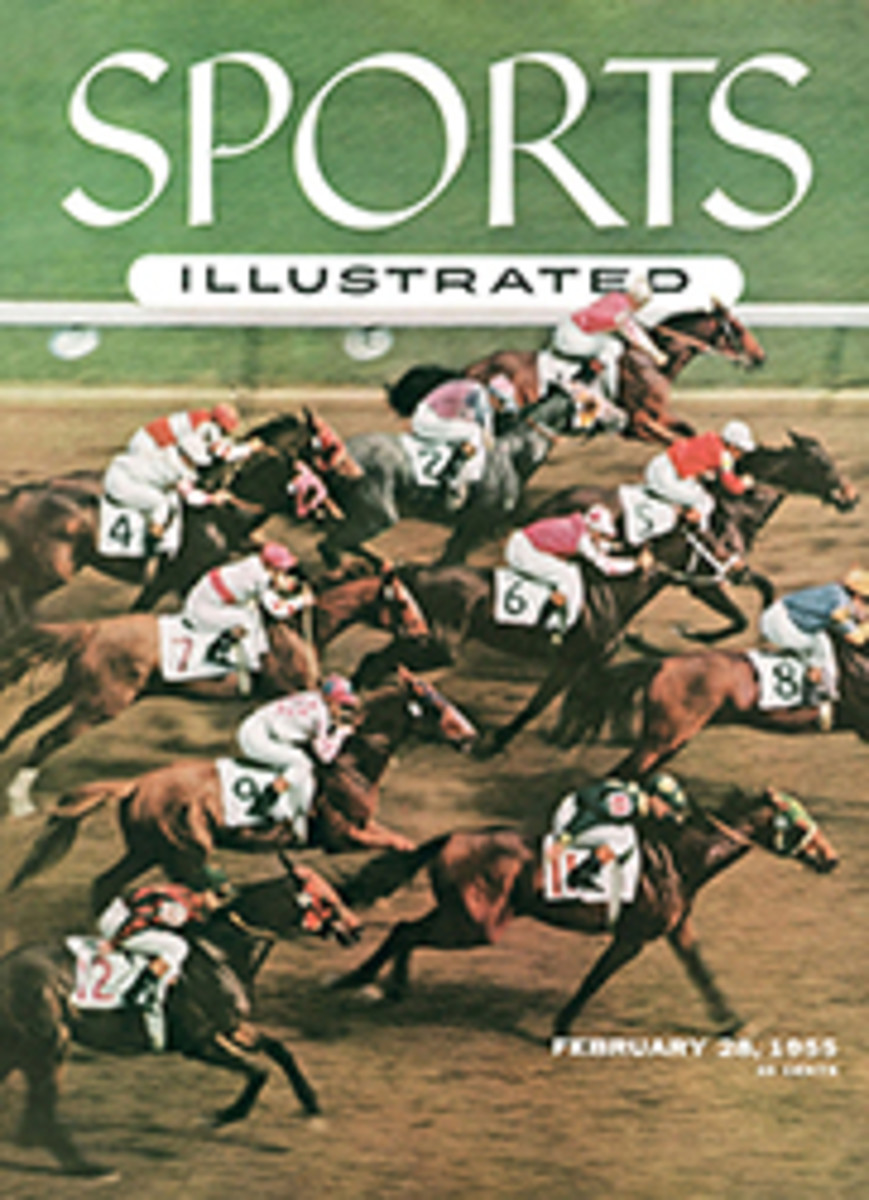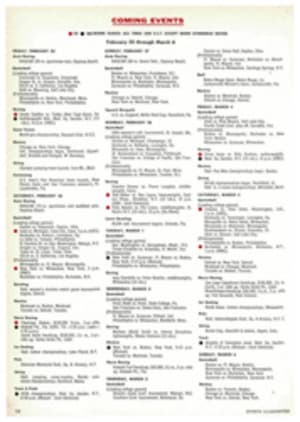
SMALL PINS
Duckpins, a "small ball" variation of the tenpin game which has drawn 2.5 million partisans in the East, is making a mild bid for national recognition with its first All-Star Match Game Championship on March 18-20 in Arlington, Va. The recently concluded eliminations in eight states and the District of Columbia to select the 32 finalists, however, were anything but mild. And they rated banner lines on sport pages from Montreal to Atlanta.
The origin of duckpins is as hazy as the pedigree of a fish market cat. Current governors of the sport say it was created some 50 years ago by a whittling bartender in a Baltimore saloon-and-alleys owned by the late John J. McGraw and Wilbert Robinson of the N.Y. Giants and the Brooklyn Dodgers. But thrifty bowling proprietors were known to have cut down broken pins before the turn of the century, and old English prints indicate the court of Henry VIII rolled small wooden balls about the size of the hard-rubber duckpin ball bowled today.
Be that as it may, duckpins was not an organized sport until the National Duck Pin Bowling Congress was founded in 1927. It still is not completely organized in the sense that other small-ball games are popular in Pennsylvania and New England, and that older bowling establishments do not conform in every detail with NDPBC specifications. But in the past 15 years, under the organizational genius of Executive Secretary Arville L. Ebersole, the group has made tremendous strides in membership. It now has 1,250,000 men and women on its rolls, or nearly half of all duckpin enthusiasts.
Small-ball and big-pin devotees have been arguing for years over which is the better game. Two of the greatest bowlers of all time, John (Count) Gengler and Mort Lindsey, were expert at both but preferred big pins. On the other hand Ebersole, a 65-year-old retired realtor with black John L. Lewis eyebrows and the springing step of a man of 45, recalls that Washington was primarily a big-pin center when he came here in 1911. It is now strictly a small-ball town and headquarters of the sport.
Nicholas Tronsky of New Britain, Conn., the Andy Varipapa of the duck-pin lanes, has been a star for 30 years. He won the annual national tournament twice and on four occasions was ranked No. 1 because of his high average. At 46, he has qualified for the All-Star. To give you a further idea of how tough the game is, Tronsky has rolled exactly two 200 games in sanctioned league play and his 1949-'50 average of 134 is an all-time record—and don't forget that with the small ball a score of 100 compares favorably with 170 in the big-ball game.
Probable favorites in the 40-game competition at the Colonial Village Center in Arlington will be Andy Friar of Fall River, Mass., ranked No. 1 nationally in 1954, and Donald Norton, another Connecticut star who won the U.S. and Eastern Open titles last year. The finalists all come from the hotbeds of the duckpin sport—Massachusetts, Rhode Island, Connecticut, Pennsylvania, Maryland, Virginia, North Carolina, Georgia and Washington.
Unfortunately, the tournament will be a championship in name only, for during the eliminations the Baltimore Proprietors Association withdrew from the sponsoring Bowling Proprietors Association of America, and Baltimore bowlers will be barred. Six of the 10 best duckpinners come from Baltimore, including William Brozey, ranked No. 2 last year and No. 1 in 1953.

